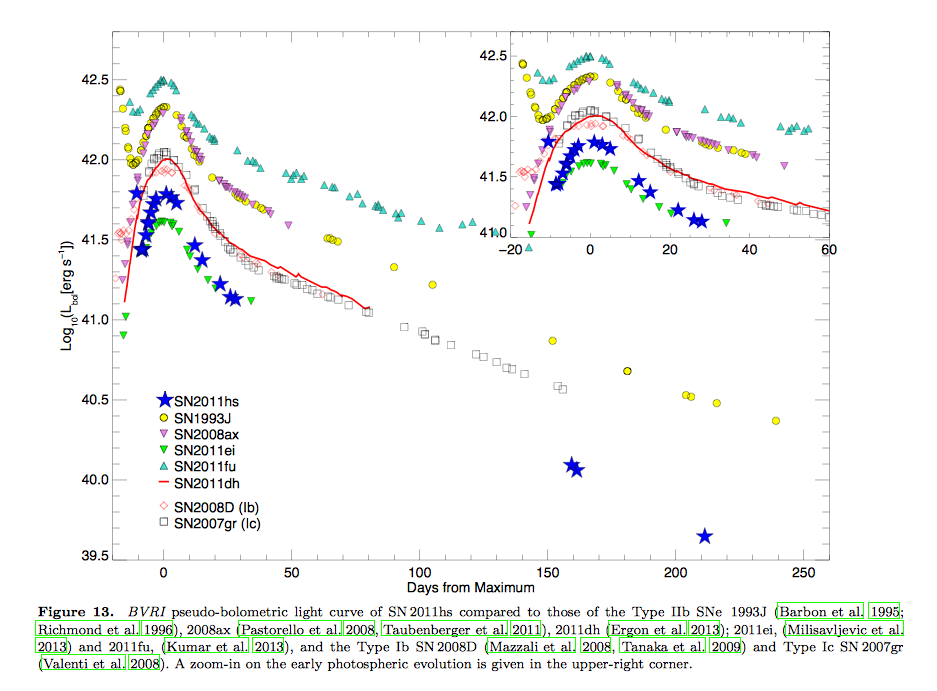Padova-Asiago Supernova Group
Highlights
SN2011hs: a Fast and Faint Type IIb Supernova from a Supergiant Progenitor
Bufano, F. etal. 2014, MNRAS 439, 1807 (link to pdf)
Observations spanning a large wavelength range, from X-ray to radio, of the Type IIb supernova 2011hs are presented, covering its evolution during the first year after explosion. The optical light curve presents a narrower shape and a fainter luminosity at peak than previously observed for Type IIb SNe. High expansion velocities are measured from the broad absorption H I and He I lines. From the comparison of the bolometric light curve and the time evolution of the photospheric velocities with hydrodynamical models, we found that SN 2011hs is consistent with the explosion of a 3-4 Msun He-core progenitor star, corresponding to a main sequence mass of 12-15 Msun, that ejected a mass of 56Ni of about 0.04 Msun, with an energy of E= 8.5 x 10^50 erg. Such a low-mass progenitor scenario is in full agreement with the modelling of the nebular spectrum taken at $\sim$215 days from maximum. From the modelling of the adiabatic cooling phase, we infer a progenitor radius of $\approx$500-600 Rsun, clearly pointing to an extended progenitor star. The radio light curve of SN 2011hs yields a peak luminosity similar to that of SN 1993J, but with a higher mass loss rate and a wind density possibly more similar to that of SN 2001ig. Although no significant deviations from a smooth decline have been found in the radio light curves, we cannot rule out the presence of a binary companion star. 3
